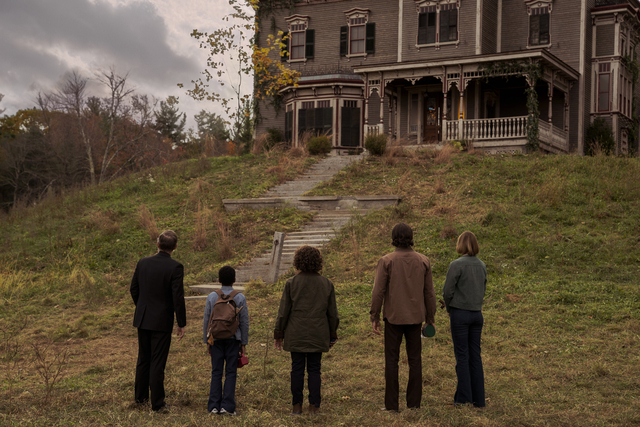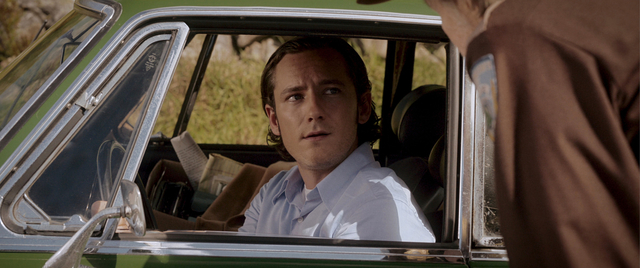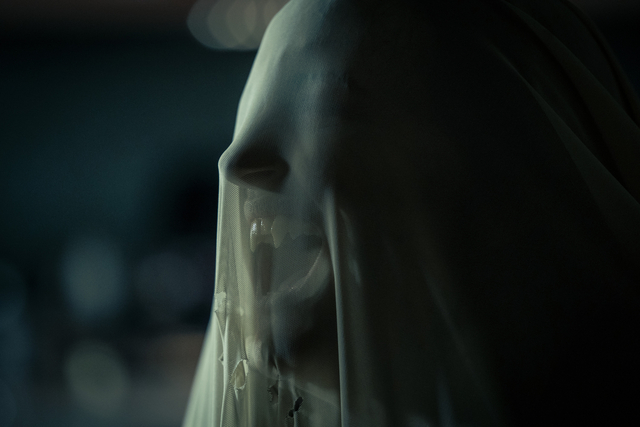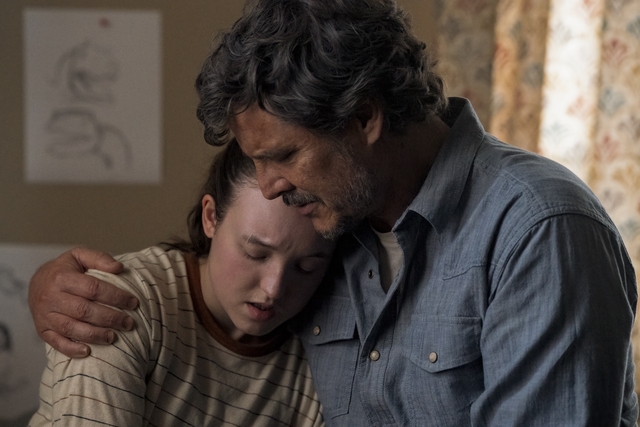What better way to kick off the horror season than with a new Stephen King adaptation? Twenty years after the last attempt to transfer King’s sophomore novel, “Salem’s Lot,” from page to screen comes director and writer Gary Dauberman’s contribution.
Salem’s Lot (2024)
When author Ben Mears (Lewis Pullman) returns home to Jerusalem’s Lot, searching for inspiration for his next book, he finds the town slowly succumbing to a darker force. As neighbors and friends begin to transform into vampires, Ben searches for answers — and a way to survive.
A unique addition to the King-adaptation zeitgeist. New Line Cinema’s “Salem’s Lot” (2024) is an entertaining, if superficial, watch that unfortunately doesn’t seem interested in tackling the deeper themes of King’s story.

As the first “Salem’s Lot” film, rather than a mini-series as are its two predecessors, this adaptation perhaps started at a disadvantage. For starters, its source material is incredibly lengthy, sitting at roughly 430 pages. It’s hard to imagine any scenario in which a film with a runtime of less than 2 hours could come close to capturing the real essence of such a story. But my review isn’t based on what Dauberman’s addition does and does not include from King’s novel. For a simple reason, really: I’ve not read it.
Even with my lack of knowledge in this area, though, I spent my entire time watching this version of “Salem’s Lot” absolutely positive that there had to be more to this story. More social commentary, more introspection into humanity, more substance.
More.
Bad in the Lot
“Things have gone bad in the Lot,” William Sadler’s Sheriff Parkins says towards the end of the film. Though I won’t spoil the details of the specific scene, Parkins’ line is a lamentation about Salem’s Lot becoming a shell of the place it used to be.
The scene, shared with Alfre Woodard’s Dr. Cody, is one that has the potential to truly capture something deeper about this story. The problem is that everything it tells us — about the town, its inhabitants, and their slow decline — is never really shown to us.

Throughout the first half of “Salem’s Lot,” we are introduced to a slew of characters with seemingly their own reasons for loving or leaving ‘the Lot’. By the end of the film, though, I could tell you more than the name and occupation of maybe two of them. This is not, however, a comment on the actors’ skills.
The acting, which beyond Sadler, Woodard, and Emmy-nominee Pullman touts talent from Makenzie Leigh, Bill Camp, Pilou Asbæk, Spencer Treat Clark, and more, is arguably one of the best parts of this adaptation. I want to call special attention to young actor Jordan Preston Carter, who plays the brave and ferocious Mark Petrie. Carter is the center focus of many scenes, especially in the last quarter of the film. He performs his part excellently, even alongside more seasoned actors.
The acting aside, it never felt like I had a firm grasp on characters beyond what they were doing in any given scene. This unfortunately extended to the settings, too. From the town itself to the ‘haunted’ house where the root of the town’s damage lies, I wanted, again, more.
Salem’s Lot: Revisited
Though I clearly have my criticisms of this film, I won’t deny that I had a fun time watching it.
The practical and visual effects that make up the vampires feel at once both very, appropriately, ‘70s and unique. A reminder, maybe, of the era of vampire stories King entered with “Salem’s Lot ” when it was published in 1975. The coffins where the vampires rest … again, I won’t spoil, but I loved the revelation and the execution of this small part of the story.

I can easily see Dauberman’s “Salem’s Lot” becoming a fun, yearly ‘spooky season’ watch for many people. One of the perks, perhaps, of being a film and not a mini-series. I can also easily see it inspiring audiences to re-read the novel that cemented King as a horror author. Or pick it up for the first time. As I write this review, a copy of the book sits in front of me, waiting for me to finally read it.
Because I know that this version of “Salem’s Lot” left me wanting something that digs beyond the superficial. I also know that the presence of that want has to mean the ‘more’ I’m looking for exists in the very story it adapted.
And that kind of inspiration must count for something.
“Salem’s Lot” releases Thursday, October 3rd on Max.


 Researcher, writer, fangirl, and book hoarder, Danielle is an American living in the U.K. Her interests include, but are not limited to: Star Wars, The Bear, The Last of Us, Marvel, and anything to do with Edgar Allan Poe. She is best known through her TikTok account @writteninthestarwars where she covers a wide range of fandom content.
TikTok: https://www.tiktok.com/@writteninthestarwars
Researcher, writer, fangirl, and book hoarder, Danielle is an American living in the U.K. Her interests include, but are not limited to: Star Wars, The Bear, The Last of Us, Marvel, and anything to do with Edgar Allan Poe. She is best known through her TikTok account @writteninthestarwars where she covers a wide range of fandom content.
TikTok: https://www.tiktok.com/@writteninthestarwars 





